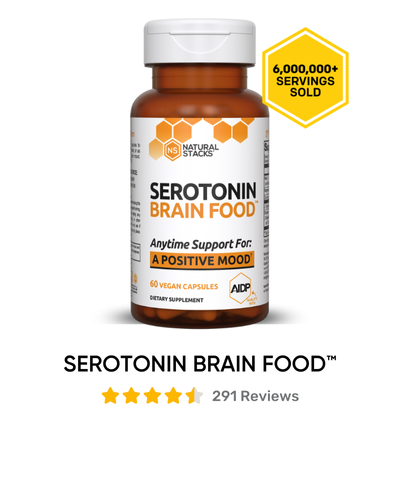5 REASONS WHY BLUE LIGHT IS HAZARDOUS FOR YOUR HEALTH (AND HOW TO PROTECT YOURSELF)


Phones, tablets, televisions, light bulbs; almost everything we interact with during the day emits blue light--including the sun shining above us.
We're exposed to a broad spectrum of different kinds of light, but blue light is one of the most powerful and potentially harmful to human health.
Light is measured in Nanometers (Nm). The shorter the wavelength, the higher the energy emission. Blue light is one of the shortest and most powerful forms of light (surpassed only by violet and ultraviolet light).
The amount of time we spend looking at this light (day or night) is creating more health conditions and risks far beyond just the ‘eye strain’ we associate with too much screen time.
For the longest time I just blew it off and kept my screen usage up as normal. It can’t be that bad, right?
Then I started to experience exhaustion due to lack of sleep, inability to wake up with the sun like I used to, an ache in my eyes that has many times led to headaches and even migraines…
Since learning about how overexposure to blue light really affects us, I now recommend everyone reduce their exposure to blue light as much as possible.
Here’s why.
- Blue light disrupts circadian rhythm (sleep-wake cycle)
- Blue light affects Melatonin production (hormone important for cellular health)
- Blue light is linked to increased risk of diseases (diabetes, cancer and more)
- Blue light creates eye strain
- Blue light is linked to increased risk of Macular Degeneration (eye disease)
Yikes. I know, that’s a lot to take in.
The point is, blue light can be harmful in a number of ways and in this article I’ll explain just how risky blue light can be and what to do about it.
5 WAYS BLUE LIGHT IS HARMFUL TO YOUR HEALTH
#1: BLUE LIGHT DISRUPTS CIRCADIAN RHYTHM
Ever wonder why the sky's blue?
It's because of blue light wavelengths from the sun.
The sun’s blue light is also the force that regulates our natural sleep/wake cycle - called the ‘circadian rhythm.’ [1]
Our circadian rhythms are naturally designed to synchronize with the rising and setting of the sun.
When the sun is shining above our heads, our bodies and minds are awake, active, and alert.
When the sun is down, the systems in our bodies naturally prepare for sleep and restoration, so we can refuel for the day ahead.
But circadian rhythm controls more than your sleep. This body rhythm regulates dozens of bodily function like hormone function, cellular health, and blood sugar levels and metabolism, just to name a few.
When we aren’t in tune with our biological clock that our ancestors were born with, our systems begin to wear down, leaving us vulnerable to disease and malfunction.
#2: BLUE LIGHT AFFECTS MELATONIN PRODUCTION

Melatonin is the hormone that tells the body to prepare for sleep.
The circadian rhythm controls when this chemical is secreted (and how much). When the sun comes up in the morning, melatonin production comes to a natural halt, and when it sets at the end of the day, production starts back up again, telling the body it's time to rest.
When we look at our computer screens late at night, the waves of blue light signal your pineal gland to stop producing melatonin. [2]
To your brain, blue light registers similarly to natural daylight, "tricking" your body to become more awake and alert.
A Harvard study looking at the effects of light exposure at night found that blue light was shown to suppress melatonin production twice as long as longer, less powerful wavelengths. [3]

Melatonin suppression has been linked with sleep disorders, increased diabetes, obesity, and even some forms of cancer. [4]
Blue light one of the most powerful visible forms of light on earth, and our reliance on technological devices and screens makes it one of the hardest to avoid.
3: BLUE LIGHT LINKED TO INCREASED DISEASE RISK
Another Harvard study found that shifting the circadian rhythm through light manipulation decreased peoples blood sugar and leptin levels (a hormone which interacts with metabolism to regulate fat-storage and glucose metabolism). Hence the suspected connection between blue-light, and both diabetes and obesity. [5]
The Barcelona Institute of Global Health has also been researching blue-light health effects, finding links between breast and prostate cancer and exposure to blue light during the night. Though it was not a definitive causal relationship, it’s interesting to notice this association. As these cancers are often based on hormone disruption, the circadian rhythm throws off hormone production and secretion, this is how the link is often explained. [6]
Other studies have also indicated that melatonin could be considered as a physiological anticancer hormone, and when it is suppressed and unbalanced, this may further increase the risk of cancers such as breast and prostate cancer. [7]
4: BLUE LIGHT AND EYE STRAIN
Blue light exposure from digital devicse puts stress on your eyes and vision in a few important ways.
Blue light "scatters" more easily than longer wavelengths of light, which means it isn't as focused. When you look at your television or laptop screen, your eyes are are looking at unfocused visual "noise."
These unfocused wavelengths are stressful on the eyes because it means they have to constantly focus and re-focus on these "flickering" or "vibrating" waves in our visual field.
This creates glare or fuzziness in your vision, which is a common cause of headaches, fatigue, and eyestrain. [8]
Toward the end of the article I share some tips on how I like to minimize all of these effects, while also supporting better eye health.
#5: BLUE LIGHT INCREASES RISK OF MACULAR DEGENERATION
Macular degeneration is defined as “an eye disease that progressively destroys the macula, the central portion of the retina, impairing central vision.” [8]
The radiation of blue light can harm the retina, which is a very thin tissue covering the inner eyeball, by penetrating the macular pigment of the eye. Basically, harming the way that the eye is able to take in light and energy.
The American Macular Degeneration Foundation states that "the blue rays of the spectrum seem to accelerate age-related macular degeneration (AMD) more than any other rays in the spectrum". [9]
Though more research is still to be done in this area, the research thus far does point towards this condition being linked strongly to blue light radiation, especially this AMD condition, where age makes the eyes even more sensitive to the wavelengths.
HOW TO PROTECT YOURSELF FROM BLUE LIGHT EXPOSURE

The quest for energy efficiency has actually made blue light widespread in our modern day usage, as fluorescent and LED lights are much more energy efficient that the lightbulbs of the past.
Look for bulbs with opaque coatings to reduce blight light emissions. Or better yet, find a dimmable or color-changing bulb that allows for softer light in the evening (I personally use the Philips Hue bulbs).
You can also use a dimmer on your tech screens. Also, the fl.ux app for computers and laptops is great to reduce the light emitted from your devices.
A Harvard study has also released evidence that blue-light blocking goggles are effective against the melatonin suppression response of blue light. Night shift workers are especially encouraged to invest in blue-light blocking goggles. [10]
Lastly, support the health of your eyes naturally by taking a vitamin like our unique Eye Defense.
The combination of Sea Buckthorn oil, Lutein and Zeaxanthin (macular pigments for eye health), and Vitamin A and E support stronger vision, prevent against symptoms of eye strain and defend against eye inflammation, tissue damage, and oxidative stress.
CONCLUSION
Ultimately, unless you’re going to live on deserted island like Tom Hanks in Castaway, it’s impossible to completely avoid artificial sources of blue light in your daily life.
Common treatments for issues like eye strain and insomnia often mask the problem. Our sleeping pills and eye drops aren’t helping our body any more than they are providing quick fixes. Combatting the effects of blue light exposure is key to minimizing eye-strain, sleep disorders, and eye dysfunction.
I hope this helped you learn more about the dangers of blue light overexposure and consider making the changes to protect your vision long-term.
- Bonmati-Carrion, Maria Angeles, et al. "Protecting the melatonin rhythm through circadian healthy light exposure." International journal of molecular sciences 15.12 (2014): 23448-23500.
- Tosini, Gianluca, Ian Ferguson, and Kazuo Tsubota. "Effects of blue light on the circadian system and eye physiology." Molecular vision 22 (2016): 61.
- https://www.health.harvard.edu/staying-healthy/blue-light-has-a-dark-side
- Wood, Brittany, et al. "Light level and duration of exposure determine the impact of self-luminous tablets on melatonin suppression." Applied ergonomics 44.2 (2013): 237-240.
- Stevens, Richard G., and Yong Zhu. "Electric light, particularly at night, disrupts human circadian rhythmicity: is that a problem?." Phil. Trans. R. Soc. B 370.1667 (2015): 20140120.
- https://www.exeter.ac.uk/news/research/title_655460_en.html Panzer, Annie, and Margaretha Viljoen. "The validity of melatonin as an oncostatic agent." Journal of pineal research 22.4 (1997): 184-202.
- http://www.bluelightexposed.com/blue-light-and-macular-degeneration/
- https://www.medicinenet.com/script/main/art.asp?articlekey=10027
- https://www.macular.org/ultra-violet-and-blue-light
- https://www.health.harvard.edu/staying-healthy/blue-light-has-a-dark-side










